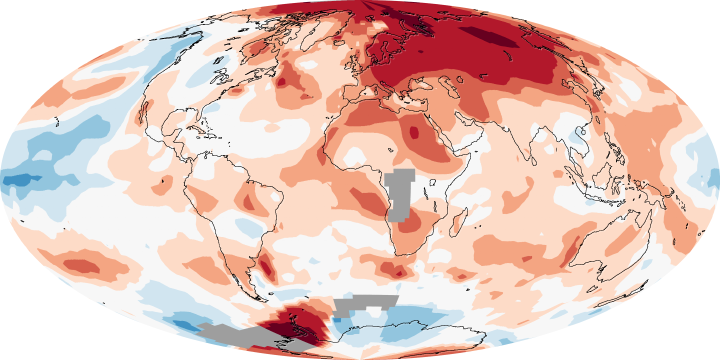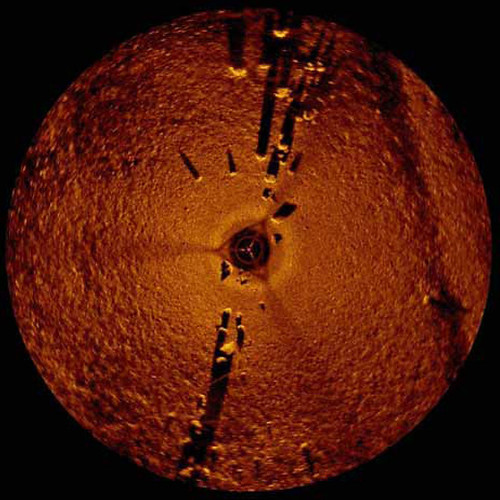Life on Google Earth
From an Amazonian rainforest to a Santa Cruz Canyon, activists are discovering if you can map it, you can save it
The map didn’t make sense. It was one of those grainy, black-and-white topographical maps, the kind of 8 ½ x 11 photocopy you get in the mail to inform you of an upcoming construction project near your home. The kind you turn this way and that until you give up trying to figure out what it corresponds to in the real world and just toss it into the trash instead.
![googleearth.jpg [Rebecca Moore of Google Earth Outreach teaching Surui tribal Chief Almir Surui how to use Google Earth at a training center in Cacoal, Brazil. The Surui is just one of the groups using Google Earth as a tool to raise awareness for environmental and social issues. (Photo: Andrea Ribeiro)]](https://www.commondreams.org/files/article_images/googleearth.jpg) Rebecca Moore of Google Earth Outreach teaching Surui tribal Chief Almir Surui how to use Google Earth at a training center in Cacoal, Brazil. The Surui is just one of the groups using Google Earth as a tool to raise awareness for environmental and social issues. (Photo: Andrea Ribeiro)
Rebecca Moore of Google Earth Outreach teaching Surui tribal Chief Almir Surui how to use Google Earth at a training center in Cacoal, Brazil. The Surui is just one of the groups using Google Earth as a tool to raise awareness for environmental and social issues. (Photo: Andrea Ribeiro)Rebecca Moore, however, did not toss this particular map. It was the summer of 2005, and the map came from a utility company that owned land in the Santa Cruz Mountains near her home. The map was titled “Notice of Intent to Harvest Timber.” Moore thought that sounded like logging. She couldn’t make heads or tails of the boundaries the map proposed to illustrate, but she was determined to figure out where the timber harvest was going to take place.Moore, a computer programmer, had recently started playing around with digital mapping tools. Her original idea had been to plot the hiking trails in her local canyon. But after an ambulance took two hours to find a neighbor’s house, her interest intensified. She learned that rescue workers were relying on 20-year-old hand-drawn maps that were badly out of date. Moore decided to put her new skills to use. She obtained parcel information from local county offices and, using GPS data, she plotted out all the homes and roads in the canyon. The result was a clear, professional-grade map, like the kind you’d buy in any bookstore. Local fire companies snapped it up.
So when Moore got the inscrutable utility company notice, she pulled out her favorite mapping tool, Google Earth. Google had recently acquired the software, which most people are familiar with as the free desktop application you can use to gaze at satellite pictures of your house. But Moore had been toying with the software since before Google acquired it. Most digital geographical information systems just offer the kind of flat topographical views you’d get in a typical hiking map. The Google Earth tool went further. It had satellite imagery, so you could see real pictures of what the land looked like, and its embedded 3-D geographic information allowed you to fly through landscapes as if you were in a helicopter. Moore was so excited about the potential uses for the software that she had recently joined Google as a technical lead for the product.
When Moore turned to her new employer’s software to identify which parcels of land the utility company owned, she was acting only as a private citizen concerned about a local land use issue. But her effort to understand what was happening in her own backyard led to a breakthrough that has had worldwide ramifications for environmental and humanitarian organizations seeking to communicate the significance of their causes.
It’s a Bird, It’s a Plane, It’s Google Earth
Los Gatos Creek Canyon, where Moore lives, is the kind of place people move to specifically because they love and care about nature. Secluded houses sit on acres of redwood forest, which is also home to osprey, beavers and even the occasional mountain lion. Hiking trails run up and down the canyon slopes, and neighbors form bonds over communal responsibilities like maintaining the winding roads that lead to their homes. If loggers were going to be removing trees in the area, Moore wanted to know exactly where.
Moore dumped her parcel information into the software and looked for the utility company’s land. The results alarmed her: it was a six-mile swath jutting straight up the canyon, right below private homes, schools and churches. The roads the loggers would take were a mess of hairpin turns. Just recently, a local woman’s car had been crushed after logs had rolled off another logging truck. These are the roads kids use to walk to school, Moore thought. There will be more accidents.
The creek at the base of the canyon provides water for 100,000 people living in the mountains and in nearby Silicon Valley. Soil erosion from the logging would surely degrade water quality, Moore thought, if not gum up the filtration machinery altogether. Plus landslides were already common; the removal of so many trees would certainly precipitate more slides.
A little more digging revealed that the proposal wasn’t even a one-time project. The utility company was seeking an ongoing permit that would allow them to remove redwoods and Douglas fir week in, week out, into perpetuity. It sounded like a bad idea to Moore, and also unnecessary. The proposal purported to be a fire-prevention plan, but from Moore’s point of view, the old-growth trees targeted in the plan weren’t a hazard. In the 1980s, for example, it was a stand of old-growth redwoods, with the fire resistance they’d built up over centuries, which had been credited with stopping a raging fire and saving many homes.
Moore soon learned she wasn’t the only one in the canyon worried about the proposed logging project. A small group of her neighbors were already discussing the proposal’s ramifications and exploring ways to fight it. Normally, community activists face an uphill battle in soliciting support for their causes. And in this case, the group, who adopted the name Neighbors Against Irresponsible Logging (NAIL), was told to expect defeat. The utility company was a pro at these kinds of battles, they were told, and the regulatory agencies usually approved these types of requests.
But in this particular David and Goliath showdown, the little guy had a secret weapon. Moore realized she could use Google Earth to take canyon residents on the equivalent of an aerial tour of the proposed logging site, helping them to understand the various risks of running such an operation so close to their homes and communities. Over the course of a weekend, Moore marked up the images in Google Earth, coloring in the land where the logging would take place, and inserting labels to denote well-known landmarks, like schools and playgrounds.
Moore unveiled her work at a community meeting in front of 300 neighbors who so tightly packed the room that some had to stand outside and watch through the windows. She began her tour in outer space with a view of the Earth floating in inky blackness. Then, Moore zoomed in on the planet, like the pilot of a spaceship. The United States came into view, then the West Coast, then the Bay Area, until Moore finally flew to the base of Silicon Valley. The image pivoted toward the local reservoir and then started flying up the canyon.
At first the audience was quiet. But as soon as Moore began to guide the room through the canyon they all knew, people started leaning forward. Real images of the actual trees, roads and buildings in their community popped up. The logging area was marked in a translucent red, clearly bumping up right next to the roads, homes and businesses where audience members lived and played. Using Google Earth’s ruler tool, Moore showed them exactly how far logging would take place from their houses and communities. She showed them the locations of proposed helicopter landing pads for logs that couldn’t be removed by truck and demonstrated how closely timber-laden choppers might pass the local day care center and schools.
“Within 10 minutes of looking at the flyover, people were saying, ‘We can’t have this. This has to stop. We have to get active,'” says Terry Clark, a Los Gatos Creek neighbor and a member of the NAIL steering committee.
“I thought I was well-informed… but I nearly fell off my chair when I had a good look at [the] Google Earth presentation of the logging zone,” resident Lisa Sgarlato wrote to a local magazine after the meeting. “This three-dimensional presentation gave an amazing topographic bird’s eye view of how invasive the logging will be.”
Soon Moore was schlepping her presentation to more community meetings as well as to sit-downs with local politicians. Area news organizations clamored for tape of the flyover to run in primetime. The area’s state assembly member had been planning to travel to the land to take a look for himself. But the flyover gave him the tour he needed and confirmed his opposition to the project. Local papers wrote editorials against the logging plan. Even former Vice President and uber-environmentalist Al Gore signed NAIL’s petition and issued a statement against the plan after seeing the flyover on a visit to Google.
“We didn’t even have to try to convince people,” says Clark, who had struggled with more conventional means of persuasion on previous neighborhood campaigns. “We just put [on the visualization], and they would automatically respond, ‘Oh yes, this has to stop.'”
Envisioning Solutions
Late last year, after numerous meetings and agency reviews, the utility company’s permit request was denied. Ultimately, the ruling was made on the basis that the utility company owned too much land to qualify for the type of permit it was seeking. But organizers and supporters alike say the ability to provide an aerial tour of the impacted area played an essential role in keeping the plan in the spotlight and organizing community opposition.
“For policymakers or environmental activists, this kind of tool that allows you to accurately fly over a site is extremely useful,” says the area’s state assembly member, Ira Ruskin. “It obviates the need for a more arduous way of taking a look at things.”
Following media coverage, environmental groups started contacting Moore to learn how they could use Google Earth for their own campaigns. At Google, Moore started setting up in-house programs to help non-profits. As demand continued to grow, the company began to realize there was an enormous opportunity to help organizations illustrate and advocate for their causes. In 2007, the company set up a new unit, Google Earth Outreach, to do just that – and tapped Moore to lead it.
The U.S. Holocaust Museum in Washington has used Google Earth to disseminate information about what some are calling genocide in Darfur. Google Earth users can fly in on villages that have been destroyed and learn more about how many people have been displaced. An east coast non-profit has successfully used the tool to raise awareness about the environmental impacts of mountaintop removal coal mining in Appalachia and to generate support for a clean water bill in Congress. UNESCO has used it to call attention to endangered world heritage sites. And over the summer, Moore and a Google Earth Outreach team flew to South America to teach an indigenous Amazonian tribe how to use the tool’s satellite images to spot illegal logging and mining activity on their land.
The tool can be used to envision potential solutions as well as to identify problems, Moore says. The Appalachia group, for example, used Google Earth to envision a future where mountaintops were covered with wind turbines, and to show how a renewable energy source like wind could produce far more energy over time than the finite amount of underlying coal.
The work has become a personal mission for Moore, whose environmental leanings germinated during childhood summers spent gamboling on her grandfather’s property in upstate New York. “I want to work on making this tool available to everyone so they can use it to strengthen their communities and protect their environments,” she says.
A strengthened community was just one by-product of the NAIL campaign. Previously, Los Gatos Creek Canyon residents had identified primarily with the specific neighborhood in which they lived. The flyover showed how all the neighborhoods were connected. “Google Earth made it possible for everyone to see what a close-knit community we are,” Clark says. “It bound people together.”
E.B. Boyd is a journalist based in San Francisco who, yes, has used Google Earth to look at satellite pictures of her home.





